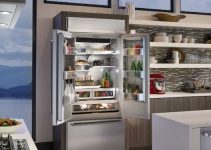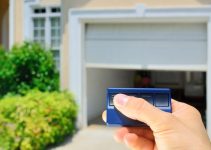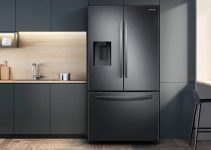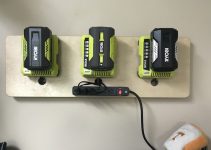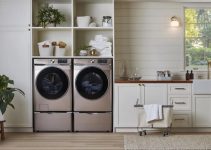There are many different models of Kenmore dryers. The model 110 is one of the most popular, as it’s affordable and quite durable. Here we’ll look into the different parts of the Kenmore Dryer Model 110 and their functions.
Whether you’re looking to fix a fault in your Kenmore Model 110 dryer, or you’re just curious to know what makes up the appliance, you’d learn more on this page.
Kenmore Dryer Model 110 Parts Diagram


Kenmore Dryer Model 110 Parts Explained
1. Top Panel
The top panel of your dryer includes the lint trap, control knob, and window.
Lint trap
This is a mesh screen that catches lint. If you don’t use it regularly, it can get clogged up with lint and stop working properly. To clean it out you need to pull off the door hinge cover and remove all of the screws holding this part in place (it will likely come off with just one screw).
Once you have removed all of these parts take out some old newspapers or rags from around your house so that they are free from dust before applying pressure on either side of each hole where screws go through into their respective holes in order to remove them all at once; this way there won’t be any chance for them getting stuck somewhere else when trying again later on down outside by yourself!
Now go ahead and unplug everything except for the power supply cord which should then be stored safely away somewhere safe until next time use–which hopefully won’t happen anytime soon because otherwise, we’d end up wasting even more valuable resources needed elsewhere too.
2. Button Panel
The button panel is the face of your dryer, and it’s where you’ll find all of your controls.
Power Switch
This switch turns the power on or off. The On position is for when you want to use the dryer, while the Off position means that no heat will be sent through any part of this machine.
Timer Switch
This switch controls how long you want your clothes to be dried before they are taken out of their molds (which we’ll talk more about later).
To set this timer up properly, turn this knob until it reads “00” minutes (or whatever setting you choose), then press down firmly so that it locks into place with red marks around its circumference—these little red lines indicate that they’ve been pressed down too hard!
Do not remove them until after turning off both switches at least once since they may cause damage if left unchecked while still active; otherwise, refer back here if necessary later when needed again.”
Vent Switch
This switch controls the amount of air that is allowed to flow through your dryer. The vent switch must always be in the On position if you want to use this machine! If this is not working properly, then it may cause damage to other parts of your appliance or even cause a fire.
The vent switch should have a little red mark around its circumference that indicates it’s been pressed down too hard or removed incorrectly; if you see this, then please do not use your dryer until you’ve checked to make sure it is properly assembled.
3. Window
The window is the upper, clear part of your dryer. It’s located on the front of your dryer and it allows you to see inside when you open it up. The window can be adjusted from closed to half-open or fully opened depending on what setting you’re using at the time.
There are also four buttons that sit next to this window: Start/Stop, Dry, Dampen and Air Dry.
If you need help figuring out which button does what, just press down each one until you hear a lock sound once all are pressed down firmly enough so they will stay pressed down until another button is pressed; this will make sure they won’t accidentally go back up while using them while standing over them!
4. Start/Stop Button
This button is used to start the dryer. It can also be used to stop the cycle you are currently running. When pressing this button, it will beep once and then start working on drying your clothes (this may take some time). If you want to stop the cycle before it ends, just press this button again until it stops beeping and then opens up again.
5. Control Knob
The control knob is a rotating dial that lets you set the drying temperature, time and cycle. To use this feature, you first need to turn on your dryer and wait until it reaches its operating temperature (usually around 110 degrees Fahrenheit).
Once this happens, move the control knob all the way counterclockwise until it stops moving or “locks into place.” From here, rotate clockwise until you reach your desired setting. If there is no tactile indication of what setting corresponds with what number on your dial—like if there are no markings on it whatsoever—you can consult our guide below:
Drying Temperature
- 100 degrees F = medium dryness;
- 110 degrees F = low heat;
- 120 degrees F = high heat
Conclusion
We’re glad that you took the time to read through this guide. We hope it helped you understand what makes up your dryer and how to repair it if something goes wrong! If there are any other parts or features we missed, please let us know in the comments section below.
